1. Teshima Art Museum – Teshima, Japan
- Who Built the Teshima Art Museum: architect Ryue Nishizawa
- Awards: The 25th Murano Togo Prize
- Can You Explore?: Yes! The Teshima Art Museum is a private art museum that requires a reservation, and each ticket costs JPY 1,570.
- Building Purpose: To serve as a museum entrenched in nature.
Located on the island of Teshima, the Teshima Art Museum is a museum like no other in the world. Built in 2010, the museum was made out of a freestanding concrete shell with no pillars and is open to the elements to invite nature in. The design was intended to resemble the splash of a water droplet. The open-air design is supposed to connect the museum to nature, with a welcoming of natural plants to the island and places for them to grow on their own without maintenance. The museum houses only a single art piece but is well-known for its beauty and welcomes tourists.
Read more: Tokyo: A Guide to the Landmark Architecture of the Pritzker Prize Winner
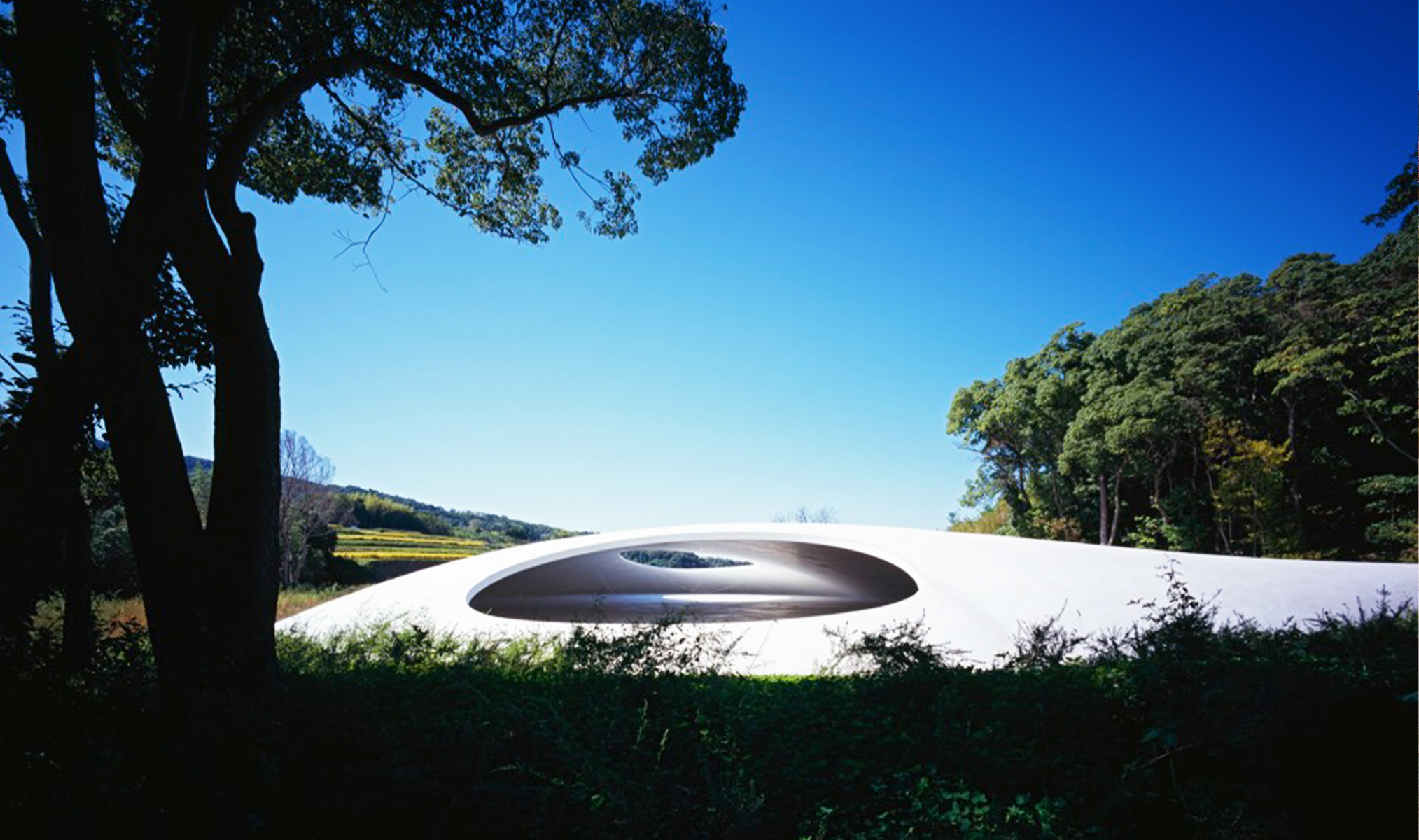
Open-air Teshima Art Museum, Teshima Island – a unique water droplet-shaped marvel embracing nature and art.
Photo: Teshima Art Museum
2. City of Arts and Sciences – Valencia, Spain
- Who Built the City of Arts and Sciences: architects Santiago Calatrava and Felix Candela
- Awards: None for the project, but both architects have received significant accolades.
- Can You Explore?: Yes! However, the Museu De les Ciencies, Hemisferic, and Oceanografic all charge for admission. You can visit all three for around 35 euros.
- Building Purpose: To provide value to the city of Valencia in support of the arts and sciences.
Completed in 2009, the City of Arts and Sciences took almost two decades to finish building. The City of Arts and Sciences is famous for being composed of many structures, which include a planetarium, a science museum, a greenhouse of native plants, an oceanographic aquarium, an opera house, a concert space, and bridges. Each building’s design takes inspiration from or represents its purpose. For example, the science museum, Museu De les Ciencies Principe Felipe, was constructed in the shape of a whale skeleton. Likewise, the oceanographic aquarium, L’Oceanografic, was built in the form of a water lily.
Read more: What to See in Malaga, Spain
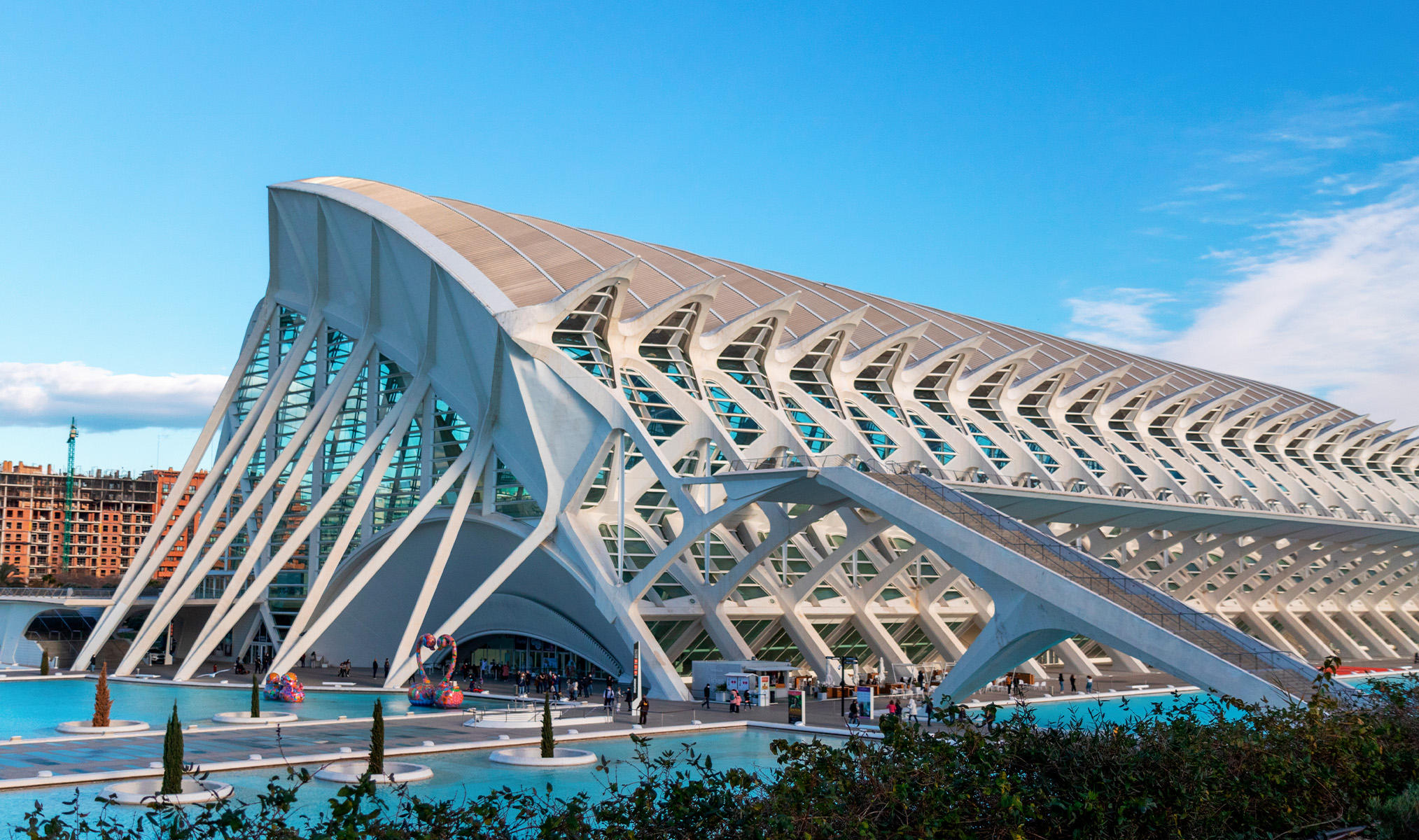
City of Arts and Sciences – a multi-structure architectural marvel, including a science museum designed like a whale skeleton.
Photo: Maria Albi / Shutterstock.com
3. Beijing National Stadium – Beijing, China
- Who Built the Beijing National Stadium: architects Li Xinggang, Jacques Herzog, Pierre de Meuron, Stefan Marbach, and artist Ai Weiwei
- Awards: RIBA Lubetkin Prize
- Can You Explore?: You can! There are sightseeing tours, and tickets typically are around $80-100.
- Building Purpose: To host the 2008 Summer Olympics and Paralympics in Beijing.
Finished in 2008 for the 2008 Beijing Summer Olympics and Paralympics, the Beijing National Stadium can seat 80,000 people. The design was inspired by Chinese ceramics, and the stadium has been nicknamed “The Bird’s Nest” due to its thatched appearance. The stadium is well worth a visit to see the impressive sight, especially given its place in Olympics history. The Beijing National Stadium was also used to host the 2022 Beijing Winter Olympics and Paralympics.
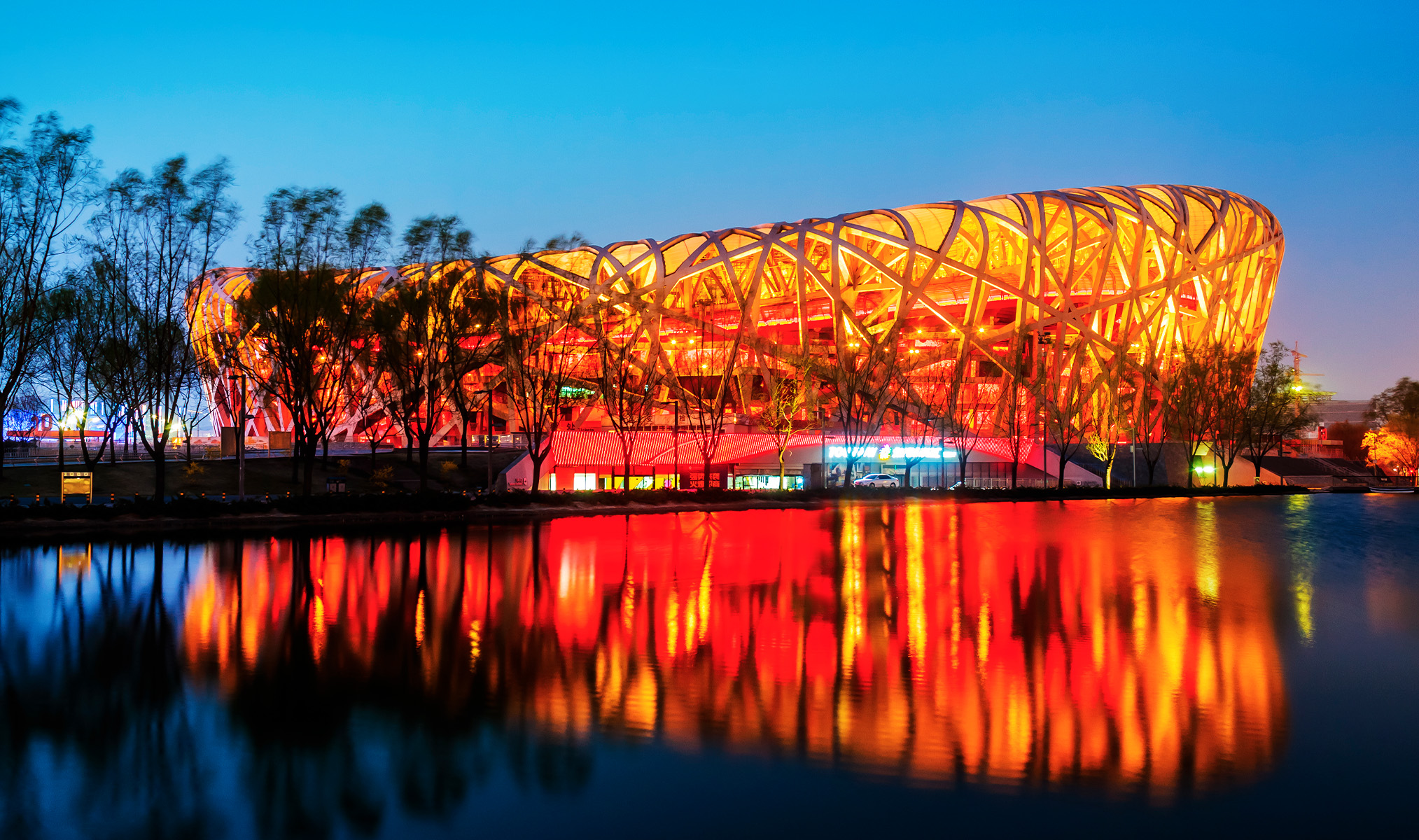
Beijing National Stadium – ‘The Bird’s Nest,’ a landmark sports venue with a ceramic-inspired design, host of the 2008 and 2022 Olympics.
Photo: ABCDstock / Shutterstock.com
4. Walt Disney Concert Hall – Los Angeles, California, United States
- Who Built the Walt Disney Concert Hall: architect Frank Gehry
- Awards: ARCHITECT Progressive Architecture Award
- Can You Explore?: You can tour and view exhibits at the Disney Concert Hall. View more information regarding visiting here.
- Building Purpose: To act as a space for the arts in honor of Walt Disney.
The Walt Disney Concert Hall was built in 2003 and has space for 2,265 people. The hall is the current home of the Los Angeles Philharmonic but also hosts other significant events associated with the arts. Despite its name, the Walt Disney Concert Hall has very little to do with the Disney Parks but everything to do with creating a dedication to Walt Disney and a place for the arts. The design was hand-chosen by Walt Disney’s widow.
Read more: Beautiful Islands in California to Visit on Your Vacation
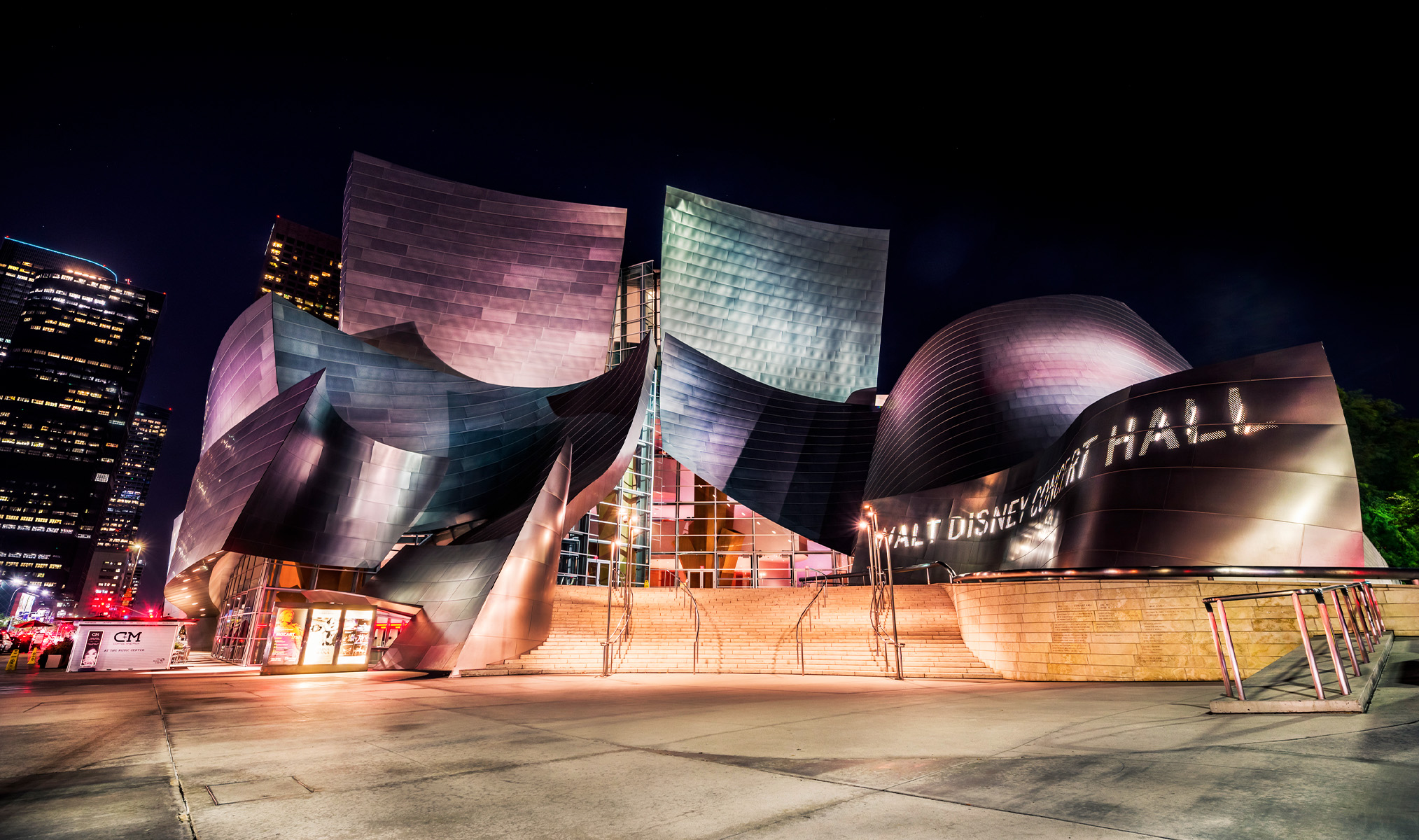
Walt Disney Concert Hall – a 2003 architectural masterpiece dedicated to the arts, currently home to the Los Angeles Philharmonic.
Photo: Marek Musil / Shutterstock.com
5. Museum of Islamic Art – Doha, Qatar
- Who Built the Museum of Islamic Art: architect I.M. Pei
- Awards: n/a
- Can You Explore?: Yes! The Museum of Islamic Art is free for residents of Qatar and 50 QAR for non-residents.
- Building Purpose: To serve as a museum that honors Islamic art.
Completed in 2008, the Museum of Islamic Art (MIA) was built to serve as a museum that embodies Islamic architecture. The museum features Islamic art of all varieties and is widely popular as a fantastic museum and a fantastic piece of architecture. The museum is notable for being the work that brought its 91-year-old creator out of retirement. The design was inspired by a 6-month journey that architect I.M. Pei took around multiple Islamic countries to create the unique structural design.
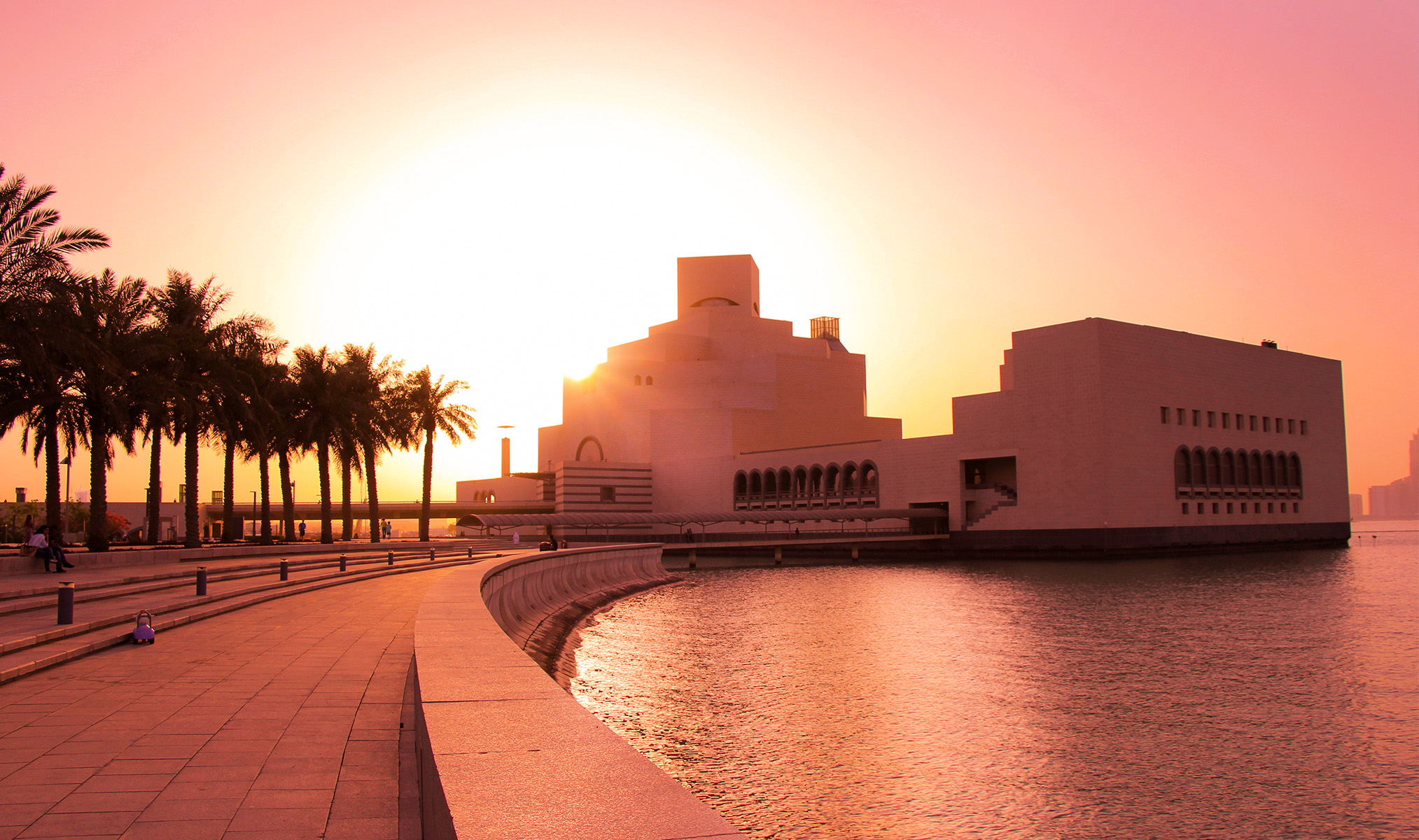
Museum of Islamic Art – a 2008 architectural wonder showcasing diverse Islamic art, designed by the renowned architect I.M. Pei
Photo: Tijana Lubura / Shutterstock.com
6. Lideta Market – Addis Ababa, Ethiopia
- Who Built the Lideta Market: Vilalta Studio
- Awards: UNSECO Special Prize
- Can You Explore?: Yes! The Lideta Market is open to the public as a public shopping mall.
- Building Purpose: To serve as a shopping mall inspired by Ethiopian culture.
Finished in 2016, the Lideta Market is a shopping center that reflects a traditional Ethiopian pattern in the exterior of the building. This pattern also lets in natural light while protecting the building from the sun’s fierce heat. The unique combination of a cultural homage paired with a functional design draws the attention of architecture appreciators and those who love shopping. Whether you need to pick up a few things at a store or want to see a stunning piece of African architecture, the Lideta Market is the perfect place to go in Addis Ababa.
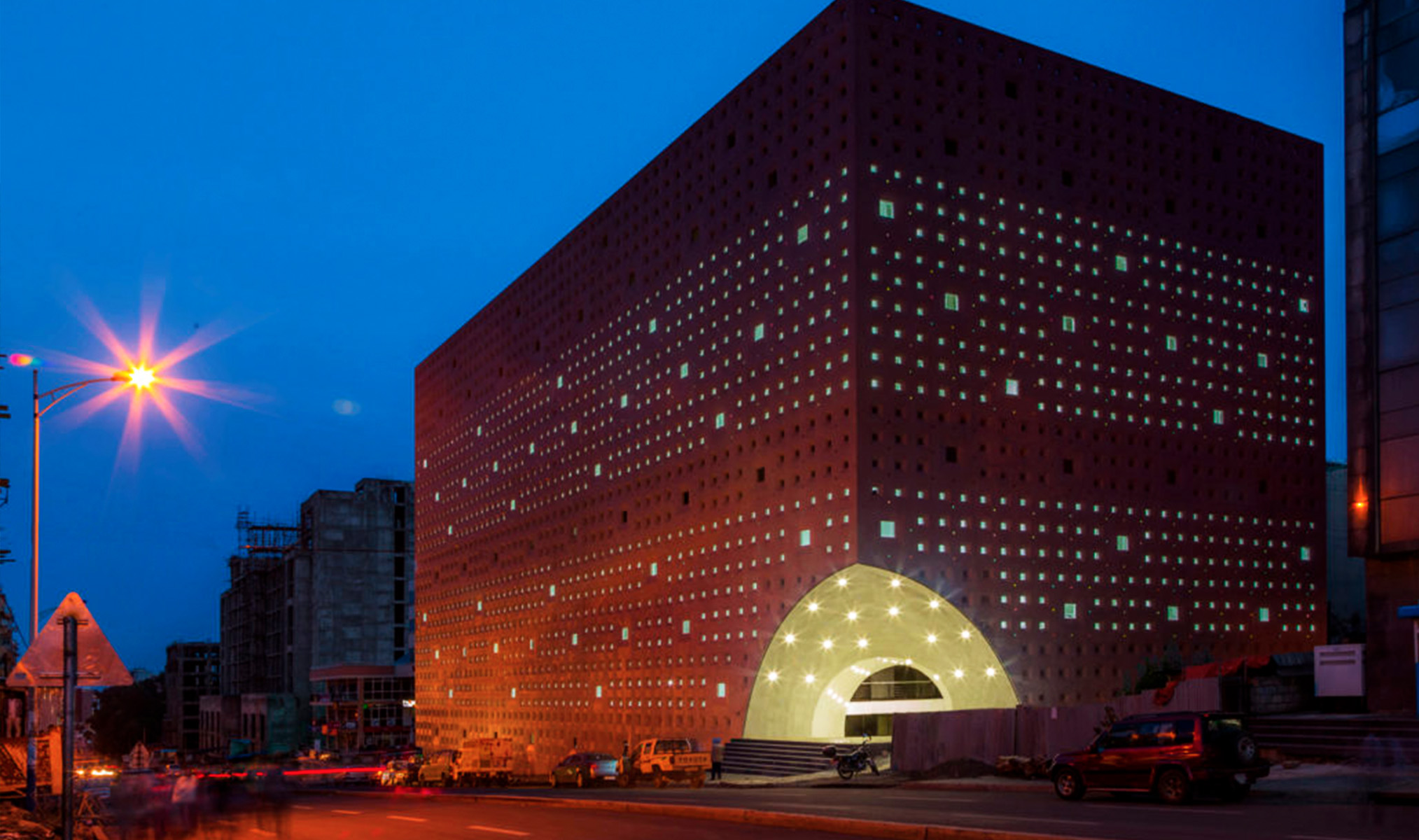
Lideta Market, Addis Ababa – a 2016 shopping center showcasing traditional Ethiopian patterns in its design, harmonizing culture with functionality
Photo: Lideta Market
7. Zeitz Museum of Contemporary Art Africa – Cape Town, South Africa
- Who Built the Zeitz Museum of Contemporary Art Africa: Heatherwick Studio
- Awards: Blueprint Award, Design Museum’s Beazley Designs of the Year, Architect’s Journal
- Can You Explore?: Yes! The Zeitz Museum of Contemporary Art Africa can be visited year-round and is 230 RA per adult.
- Building Purpose: To serve as a museum dedicated to contemporary African art.
Completed in 2017, the Zeitz Museum of Contemporary Art Africa is the largest contemporary art museum in Africa. Not only is the Zeitz Museum of Contemporary Art considered a gorgeous and expertly curated museum, but it is a work of art itself. There was an original structure in which the Zeitz Museum of Contemporary Art Africa was built, which had been originally built in 1921. In fact, the new museum was actually carved out of the original!
Read more: Cape Town and Its Suburbs: Hedonism Is Part of the Plan
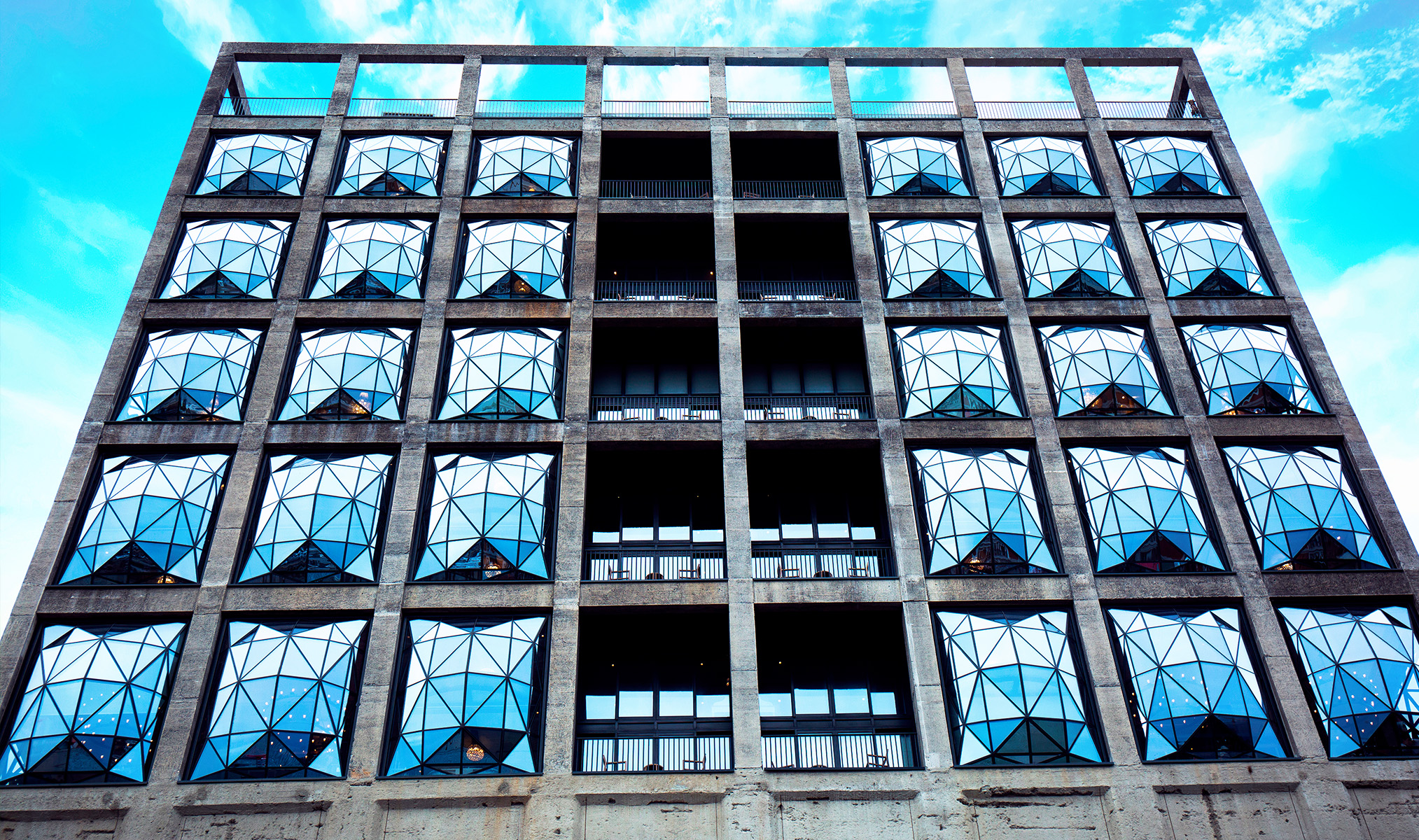
Zeitz Museum of Contemporary Art Africa – the largest of its kind, housed in a 1921 structure skillfully carved into a modern masterpiece.
Photo: OAnderson / Shutterstock.com
8. Burj Khalifa – Dubai, United Arab Emirates
- Who Built the Burj Khalifa: architect Adrian Smith
- Awards: Award of Merit for World Voices Sculpture, Interior Architecture Award, Certificate of Merit from AIA – Chicago Chapter
- Can You Explore?: Yes! There are many attractions within the Burj Khalifa, and it is seen as a thing you must do when you visit Dubai. Tickets are usually around $75.
- Building Purpose: To bring international attention to Dubai.
Most famous for its position as the world’s tallest building, the Burj Khalifa is a skyscraper that was completed in 2009. It stands 829.8 m tall and was built with reinforced concrete and structural steel. The Burj Khalifa is the centerpiece of a luxurious newer area in Dubai and has quickly become an international sensation. There is an observation deck at levels 124 and 125 of the Burj Khalifa and other experiences for you to enjoy over a mile above the ground.
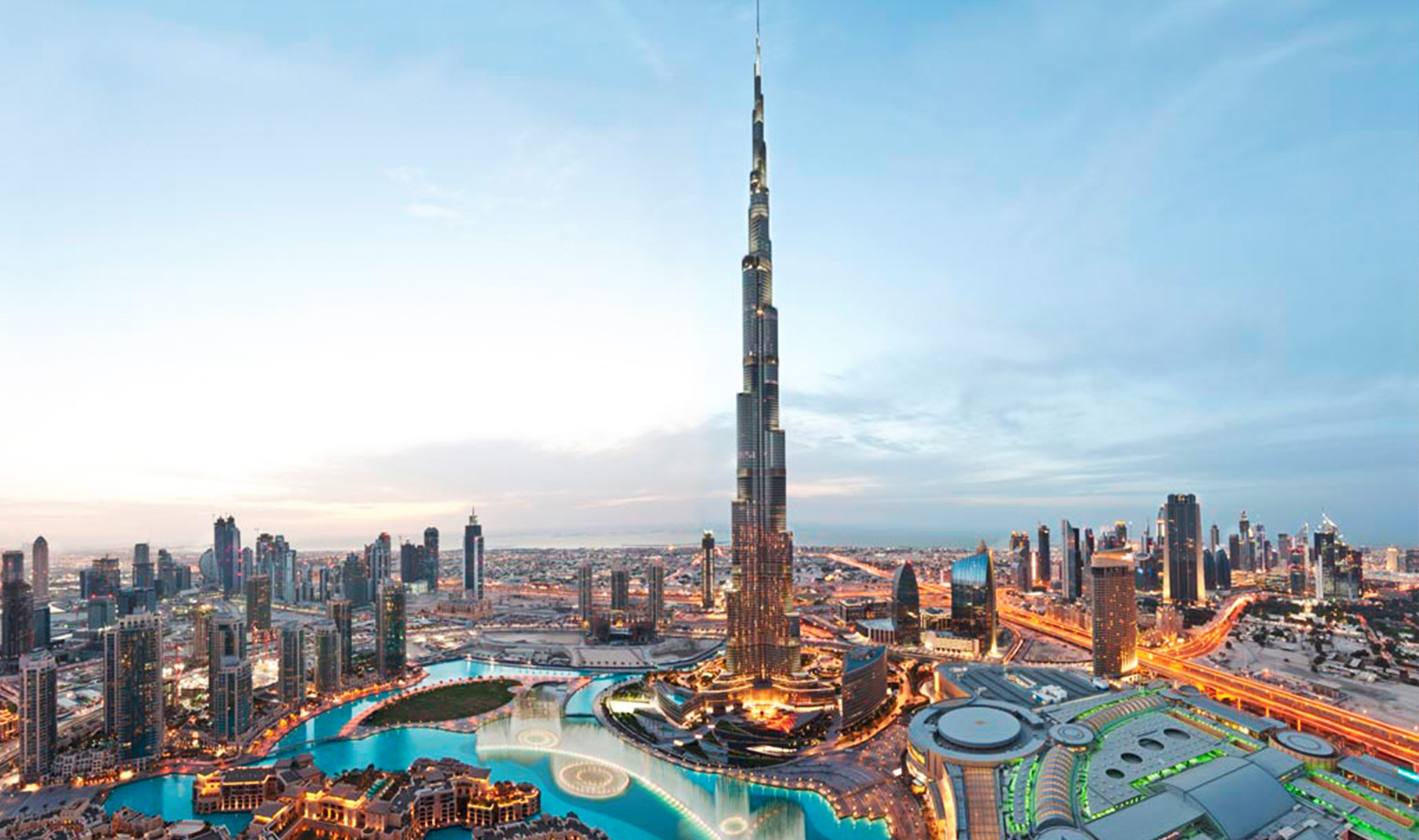
Burj Khalifa, Dubai – the world’s tallest skyscraper, an international marvel with an observation deck over a mile high.
Photo: Burj Khalifa
9. Elbphilharmonie – Hamburg, Germany
- Who Built the Elbphilharmonie: architect Pierre de Meuron
- Awards: BDA Architecture Award, Building of the Year
- Can You Explore?: Yes! The Elbphilharmonie has guided tours and plentiful performances that you can visit. Performances start as low as 11 euros a ticket.
- Building Purpose: To be both a concert hall and a residential building.
The Elbphilharmonie, also known as the Elphi, was completed in 2017 and is one of the largest concert halls in the entire world. In addition to hosting music events, the building also is a residential structure. The design took inspiration from the nearby water, and like the 8th entry on our list, the Elphi was built on top of another building (built in 1963). Within the Elphi are three concert halls, a hotel, and a plaza. There are almost always shows, concerts, workshops, and dance performances being hosted at the Elphi, regardless of the time of year.
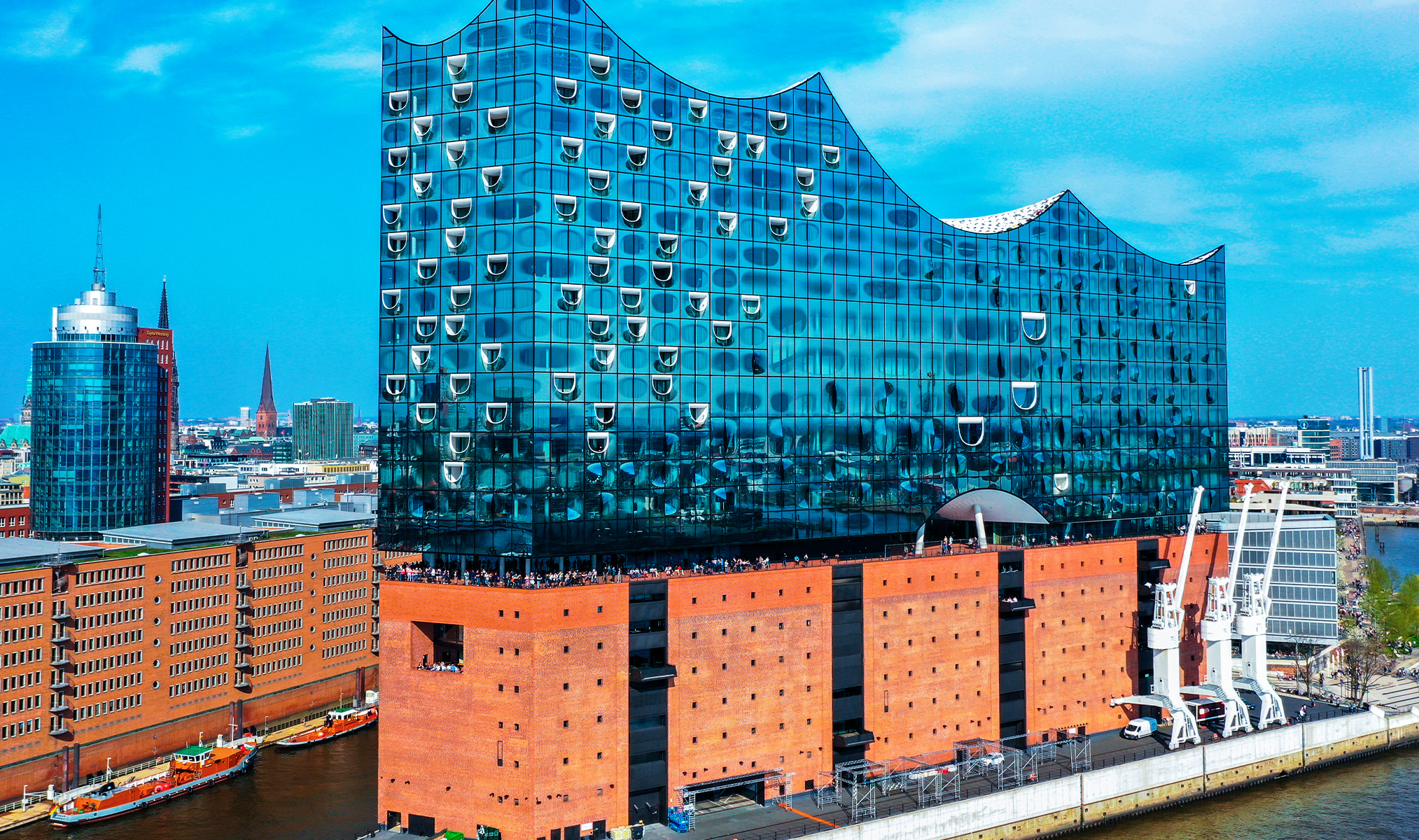
Elbphilharmonie (Elphi) – a 2017 massive concert hall and residential building in Hamburg, with a water-inspired design and a variety of cultural events.
Photo: Mirko Keiner / Shutterstock.com
10. The Smithsonian National Museum of African American History and Culture – Washington, D.C., United States
- Who Built the Smithsonian National Museum of African American History and Culture: Freelon Group, Adjaye Associates, and Davis Brody Bond
- Awards: Design of the Year, American Institute of Architects Award
- Can You Explore?: Yes! The Smithsonian National Museum of African American History and Culture is available to be visited for free.
- Building Purpose: To serve as a museum of African American history and culture that is representative of the culture.
Unlike other designs on our list, the eventual design of the Smithsonian National Museum of African American History and Culture was the subject of a contest dedicated to finding the perfect design that embodied African American culture. The contest winner had submitted the plan, which consisted of a building reminiscent of a crown from the Yoruba culture. Construction of the Smithsonian National Museum of African American History and Culture was completed in 2016 and operates as an established history and art museum.
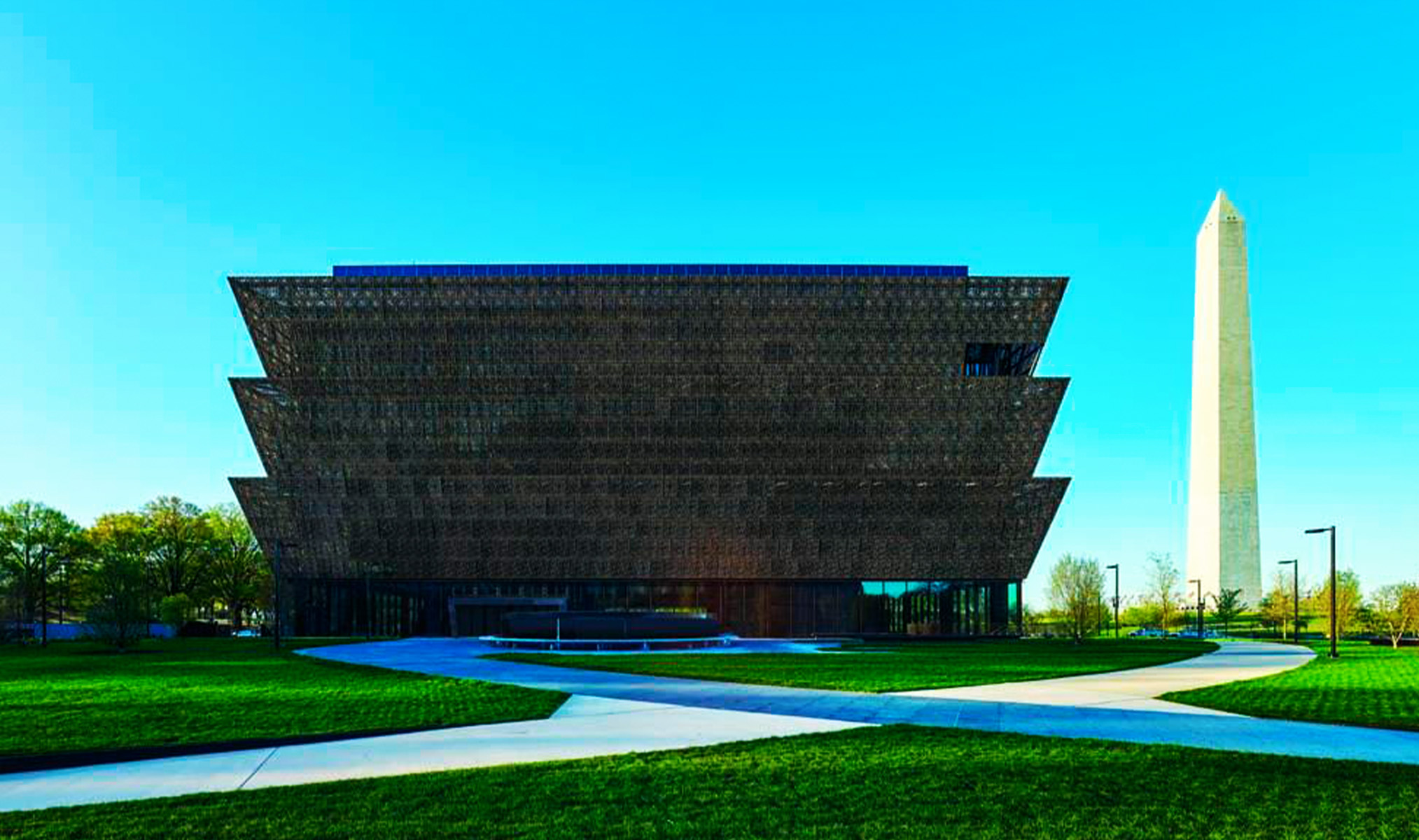
Smithsonian National Museum of African American History and Culture – a crown-inspired tribute to African American heritage, established in 2016.
Photo: Smithsonian National Museum of African American History and Culture






